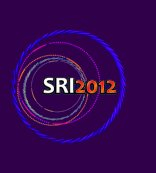Speaker
Dr
Takaki Hatsui
(RIKEN)
Description
On behalf of SOPHIAS collaboration
SPring-8 Angstrom Compact free-electron LAser (SACLA), which is the second X-ray free-electron laser (XFEL) facility after LCLS at SLAC National Accelerator Laboratory achieved laser amplification on June 7th, 2011. In the first user run of SACLA starting in March 2012, 25 proposals from domestic/international institutions will be conducted, where more than half of the proposals will use the currently deployed Multiport CCD (MPCCD) detectors. In this talk, we present the development status of the novel X-ray 2D detector, SOPHIAS, for SACLA to cover the scientific cases, where the currently deployed MPCCD detector does not able to reach.
The pixel structure of SOPHIAS is based on multi-via concept; the closely spaced implant regions within a single pixel is used for signal charge division. Each implant region is connected to the readout circuitry by metal via. By connecting non-equal number of via metal, unpropotional charge collection will be possible. Large portion of the signal is transferred to high gain amplifier sensitive to small signal regime, whereas small portion of the charge is transferred to low gain amplifier. This pixel with size of 30 um square is realized by using silicon-on-insulator (SOI) sensor technology developed with KEK and Lapis Semiconductor Ltd. Last year, we have introduced stitching and backside processing onto KEK multi-project wafer run process. We have succeeded in manufacturing with an area of 66 mm x 30 mm by stitching 5 shots of reticule size. The production is carried out by 0.2 um FD-SOI CMOS technology. Handle wafer, which is the photodiode for x-ray detection, has backside implanted, laser-annealed, and aluminum coated surface so to shield the optical light without sacrificing the quantum efficiency. The handle wafer is made of floating zone silicon which enables us to fully deplete 500 um thick handle wafer. The characterization as well as the development of readout system of the sensor is now under progress.
Author
Dr
Takaki Hatsui
(RIKEN)

